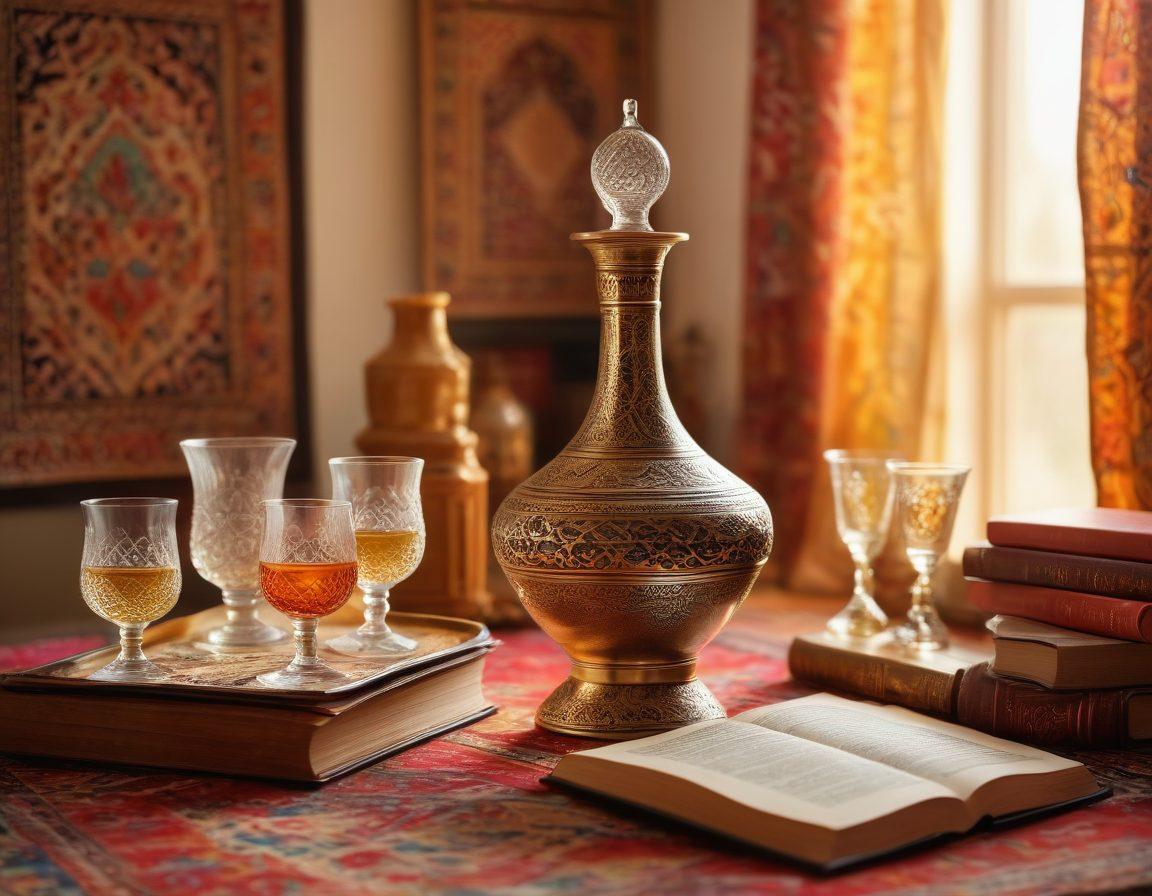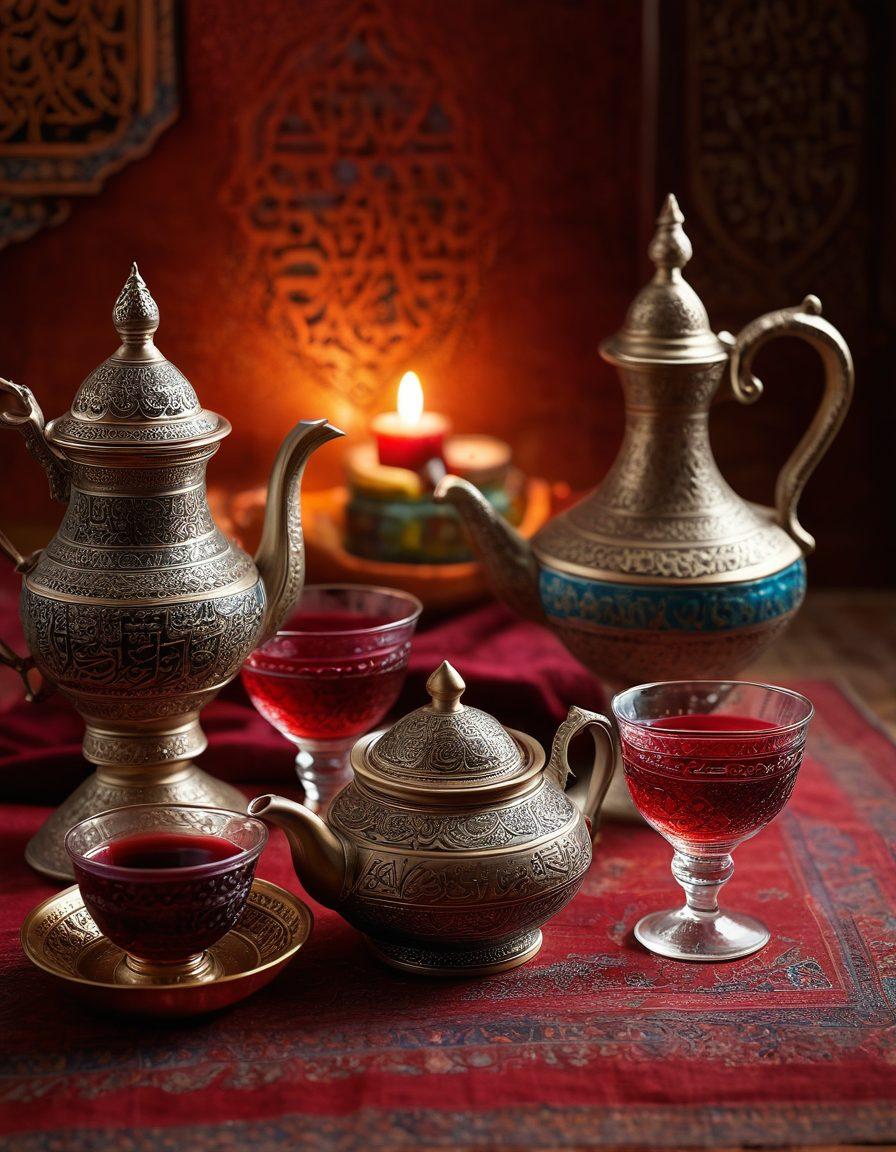Celebrating Language and Culture: How Wine Inspires Joyful Storytelling in Arabic Literature
Wine has a remarkable ability to unite people, evoke memories, and ignite creativity, often serving as a centerpiece for social gatherings and spirited conversations. When we delve into the depths of Arabic culture, the rich tapestry of storytelling woven through the ages intertwines beautifully with the enticing world of wine. What stories linger in the aromatic notes of a vintage red or the brightness of a crisp white? In the heart of Arabic literature, we find that wine is not just a beverage but a muse that inspires joyful tales, vibrant poetry, and intricate narratives, inviting us to explore the nuances of the Arabic language, its grammar, and its linguistic structure.
Think about it: how often do we associate gatherings with laughter, heartfelt tales, and, of course, a glass of fine wine? The Arabic lexicon is filled with emotionally charged vocabulary that conveys the beauty of these moments. Words and phrases roll off the tongue like a sweet Merlot, bringing with them layers of meaning and cultural significance. From the convivial spirit of poetry to the tender elegance of prose, wine acts as a catalyst, encouraging a fluid communication that transcends the barriers of language. It prompts us to dance with the nuances of expression found within Arabic literature—filling it with depth, vibrancy, and a palpable sense of joy.
In the realms of Arabic literature, wine often signifies more than mere indulgence; it symbolizes tradition, heritage, and even the complexities of love and loss. As we explore these narratives, one feels that unfiltered joy as characters sip their wine, recounting tales of heroism, romance, and the trivialities of everyday life. These stories reveal the richness of the Arabic language, teaching us that even the most grammatical constructs can bloom into beauty when intertwined with genuine emotion. They hold a mirror to our own experiences, reminding us how traditions and customs connect us through joyous storytelling. How much can a single glass spark the imagination and lead to a tapestry of tales?
Linguistics enthusiasts will appreciate how the intricate framework of the Arabic language—its grammar, syntax, and vocabulary—finds a distinctive voice in literary compositions. When wine enters the narrative, it often accentuates linguistic features such as rhythm and metaphor, enhancing the overall poetic experience. The way Arabic poets phrase their verses about wine can teach us about language itself. Each sip translates into a new dimension of understanding, revealing the art of expression in ways both structured and spontaneous. This dynamic interplay encourages learners and educators alike to explore Arabic with a sense of adventure, making language acquisition an engaging endeavor.
As we gather around the table, sipping on our favorite wines, we’re not just enjoying a drink; we’re partaking in an age-old tradition that values storytelling as a form of communication and expression within the Arabic culture. In every glass raised, there’s an invitation—a call to forge deeper connections through shared narratives. Whether we’re budding linguists or seasoned scholars, the joy found in these wine-fueled narratives encourages us to embrace the beauty of the Arabic language. The next time you uncork a bottle, consider the heritage wrapped up in every drop and the stories waiting to be told. What tale will you share?
Sip, Savor, and Scribe: The Linguistic Joys of Arabic Wine Poetry
As the sun sets, painting the sky with hues of orange and purple, there’s something almost magical about sharing a glass of wine. But while we might bask in the pleasure of its flavors, there's a deeper layer of joy found in the words inspired by wine in Arabic poetry. The rich tradition of Arabic literature has long celebrated the pleasures of life, and wine serves as a metaphor for joy, love, and storytelling. Here, we dive into the linguistic joys of Arabic wine poetry, where each sip leads to a scribe’s pen dancing across the page, intertwining culture and expression in a beautiful tapestry.
Wine, often dubbed 'the drink of poets,' becomes an essential ingredient in the lexicon of Arabic storytelling. Imagine the delicate aroma as it swirls in a glass, and think about how many happy moments and joyful gatherings are shared over these sips. This connection between wine and happiness creates an inviting backdrop for poetry. But what makes this form of expression so unique in the Arabic language? It’s the intricate grammar and syntax that allows poets to evoke emotion and imagery through carefully chosen words and phrases. The beauty lies not only in the vivid descriptions of the wine itself but also in the way the language dances on the page, turning every verse into a celebration of life.
Have you ever wondered how the structure of a language can influence storytelling? In Arabic, the linguistic structure plays a vital role in shaping the emotional depth found in poetry. When poets employ a rich vocabulary, they weave together a narrative that feels alive. The way they juxtapose terms with a combination of traditional values and contemporary nuances reflects cultural heritage while still being accessible to an academic audience. This fusion allows for a fresh approach to learning about both language and the joyful traditions tied to wine, with each poem serving as both an educational tool and an artistic piece.
Imagine a classroom filled with eager students, each discovering the pleasures of Arabic poetry that celebrates wine. They might sip a glass while delving into the beauty of its vocabulary, learning to decipher sentences that flow like the wine itself. The act of engaging with poetry through such an enjoyable activity promotes language learning, turning academic instruction into an experience filled with laughter and connection. Through their own explorations, students find themselves creating phrases that reflect their feelings, mirroring the joy found in the cups they raise.
The tradition of wine poetry in Arabic literature is rich, and it invites us to consider the nature of language as a tool for joy and communication. As we contemplate the stories inspired by wine, it becomes clear that every poem is a slice of culture, a moment of history captured in words. It reminds us that the way we express ourselves through language can draw us closer to our heritage while exploring the profound connections we share with the world around us. So, the next time you pour a glass, think of the joyful stories that could be waiting to be written. Cheers to that!
Pouring Tradition: The Art of Storytelling in Arabic Literature and Wine
From the vineyards of Morocco to the valleys of Lebanon, wine has always had a special place in the hearts of Arabic culture. It's not merely a drink; it’s a vessel of tradition, a catalyst for joyful storytelling, and a rich symbol of community. Imagine gathering around a beautifully adorned table, laughter mingling with the gentle clinking of glasses, as stories begin to flow as freely as the wine itself. This blend of language, literature, and celebration encapsulates the essence of Arabic storytelling, making each sip a narrative thread woven into the fabric of culture.
The beauty of the Arabic language lies not only in its melodic sounds but also in its intricate grammar and syntax. As we dive into the world of Arabic literature and poetry, we find that the choice of words and phrases can transform a simple act of pouring wine into a profound expression of love, longing, and heritage. Consider how one can convey a feeling of happiness and warmth simply by describing the delicate bubbles in a glass of sparkling wine or the rich aromas wafting from a velvety red. These linguistic structures play a vital role in storytelling, as each word paints a vivid picture that resonates with the emotions of both the writer and the reader.
Storytelling in Arabic literature is akin to a fine wine—both require time, patience, and an understanding of the complex layers involved. As writers explore their thoughts on love, loss, and celebration, they often embrace the act of sharing that which is deeply personal, just as one might delight in offering a glass of wine to a cherished friend. “Words are the wine of the mind,” someone once said. Just as wine elicits deep feelings, so too does the beauty of language provoke reflection, connecting individuals through shared experiences. How can we harness this power of storytelling and wine to create a joyful atmosphere in our lives?
Learning the nuances of the Arabic language can be an exquisite journey, rich with tradition and heritage. From the vast lexicon to the captivating expressions found in poetry, mastering Arabic is akin to learning the art of winemaking—it requires skill, dedication, and an appreciation for the subtleties that make each experience unique. Educational institutions increasingly recognize that education is not just about instruction; it is about facilitating a deep connection to culture and heritage. With every new word mastered, learners are essentially pouring the essence of a rich tradition into their lives, celebrating the joyful stories that have been passed down through generations.
In conclusion, wine and storytelling in Arabic literature are intrinsically linked, representing a tapestry of joy, culture, and expression. They remind us that every drop carries with it the stories of those who enjoyed it before, making every glass a toast to our shared human experience. So, why not pour a glass of your favorite wine and immerse yourself in Arabic literature today? Dive into those heartwarming tales that awaken your spirit, and you may just find yourself inspired to share your own joyful stories, keeping the cycle of tradition alive in the process.


